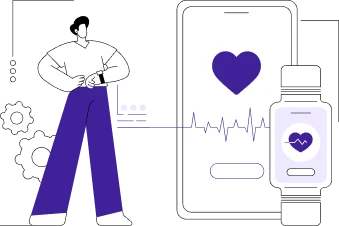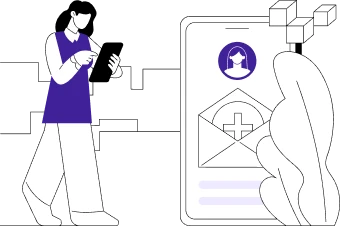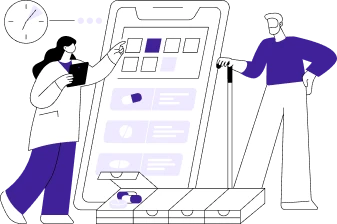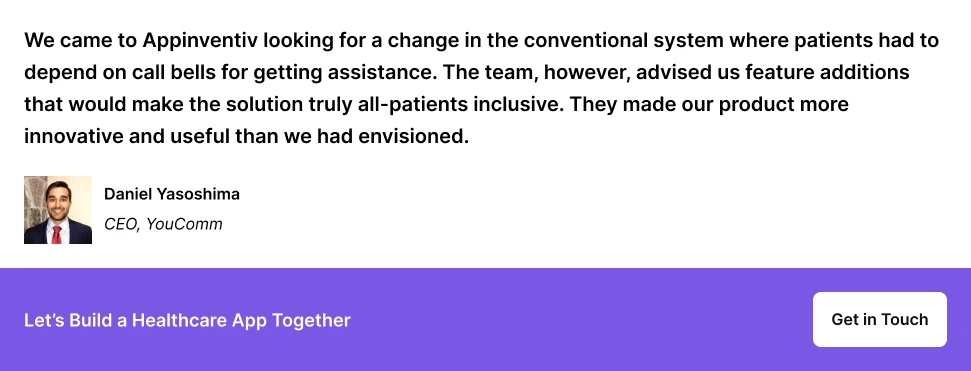- How to Estimate Healthcare App Development Costs?
- Factors that Impact the Cost of Developing an mHealth App?
- Mobile App Complexity
- App Features and Functionalities
- Trends & Technologies
- App Design & Animation (UI/UX)
- App Platform Selection
- Technology Stack
- Backend Complexity
- Hosting & Server Costs
- Third-Party Integrations
- Size of the Development Team
- Location of Development Team
- Hidden Factors Influencing Healthcare App Development Costs
- Quality Assurance
- App Maintenance & Post-Launch Support
- App Hosting & Listing Costs
- App Marketing & User Acquisition
- Compliance and Security
- Strategies for Cutting Down Healthcare App Development Cost
- Prioritize Core Features (MVP Approach)
- Plan for Long-Term Maintenance and Scalability
- In-house vs Outsourcing Healthcare App Development
- Use Cross-Platform Development
- Leverage Existing Tools and Frameworks
- Code Reuse
- How App Category Influences Healthcare Application Development Cost
- Telemedicine Apps
- EHR and EMR System Integration Apps
- AI-Driven Healthcare Apps
- Chronic Disease Management Apps
- Fitness and Wellness Apps
- Mental Health Apps
- Remote Patient Monitoring (RPM) Apps
- How to Build a Healthcare Mobile App & Cost Breakdown Based on Involved Stages
- 1. Conduct Market Research
- 2. Define Features and Functionalities
- 3. Craft a Business Plan
- 4. Choose the Right Platform
- 5. Select the Right Tech Stack
- 6. Secure Data and Compliance
- 7. Design UI/UX
- 8. Develop the App
- 9. Test and Launch the App
- 10. Maintain the App
- How Appinventiv Built Successful Healthcare Apps
- DiabeticU
- Health-e-People
- Soniphi
- YouCOMM
- Healthcare App Monetization Strategies: How Do Apps Make Money?
- 1. In-App Purchases (IAP)
- 2. Subscription-Based Model
- 3. Freemium Model
- 4. Advertising
- 5. Sponsored Content
- 6. Paid Apps
- 7. Affiliate Marketing & Lead Generation
- How to Calculate ROI for Healthcare App Development
- How Appinventiv Helps You Build Healthcare Apps That Deliver Value
- FAQs
Key takeaways:
What You’ll Learn
- The cost of building a healthcare app in 2025 varies based on multiple factors like type, features, and complexity.
- HIPAA and GDPR compliance is mandatory and impacts the overall app development budget due to high security requirements.
- Partnering with Appinventiv ensures compliant, scalable, and ROI-focused healthcare app development.
Facts & Figures
- Healthcare app development in 2025 costs between $40,000 and $400,000+ depending on complexity and features.
- Annual app maintenance typically costs 15–20% of the original development cost.
- The healthcare app market generated $3.74 billion in global revenue in 2024.
Success Stories
- DiabeticU: An AI-driven app developed by Appinventiv that helps Type 2 diabetes patients with personalized health recommendations.
- Health-e-People: Another Appinventiv success, this app consolidated data from over 200 health devices to aid medical research.
In March 2020, when the world came to a standstill due to COVID-19, telemedicine use among physicians skyrocketed from 15.4% in 2019 to 86.5% in 2021. This dramatic shift wasn’t just a temporary pandemic response—it fundamentally changed how we think about healthcare delivery.
Consider the success story of Ochsner Health’s digital medicine programs, where 79% of patients achieved better blood pressure control within 180 days, while diabetes patients saw a 74% reduction in hypoglycemic episodes. These aren’t just statistics—they represent lives saved, complications prevented, and healthcare costs reduced through innovative app development.
But here’s the critical question every healthcare entrepreneur faces: What is the average cost of developing a healthcare app that meets regulatory standards, provides real value to users, and can compete in this rapidly growing market?
Well, the answer is multifaceted taht varies depending on the app’s complexity, features, security requirements, and more. On average, healthcare app development costs range between $40,000 and $ 400,000 for simple to advanced apps, and $ 500,000 and above for enterprise-grade healthcare applications.
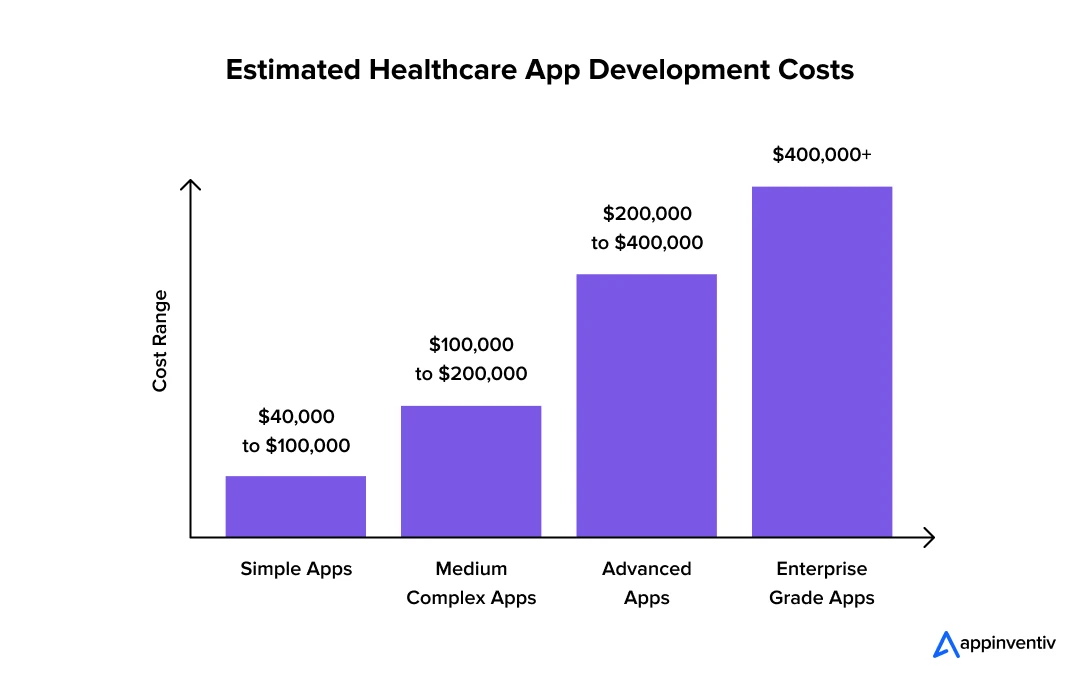
This comprehensive guide on healthcare application development cost aims to unpack the financial realities of developing a secure, compliant, and impactful mHealth app, providing clarity on considerable factors and your potential investment.
How to Estimate Healthcare App Development Costs?
Estimating the cost to develop a medical app, often called an mHealth app, primarily hinges on two crucial factors: the total development hours required and the hourly rates of the development team. Here is a simple formula to calculate the cost of app development for healthcare:
| Development Hours × Developer’s Hourly Rate = Total Cost |
For instance, if a specialized healthcare app development company charges $40/hour and the project demands 2,500 hours of work, the initial healthcare mobile app development cost would be $100,000. This estimate excludes ongoing post-launch maintenance, updates, and regulatory compliance audits, which are vital for healthcare apps.
| $40/hour x 2,500 hours = $100,000 |
By understanding this formula and the key elements that influence each variable, you can achieve a surprisingly accurate cost projection for your healthcare app.
Discuss your project idea with us and get a more precise cost estimate now.
Factors that Impact the Cost of Developing an mHealth App?
The “development hours” and “developer’s hourly rate” we mentioned above are not static. Several factors impact these variables. This makes healthcare app development a nuanced investment. Let’s take a deep dive and comprehend the critical components that impact healthcare app creation cost. This will help you make an informed decision and yield the maximum ROI of your healthcare app investment.
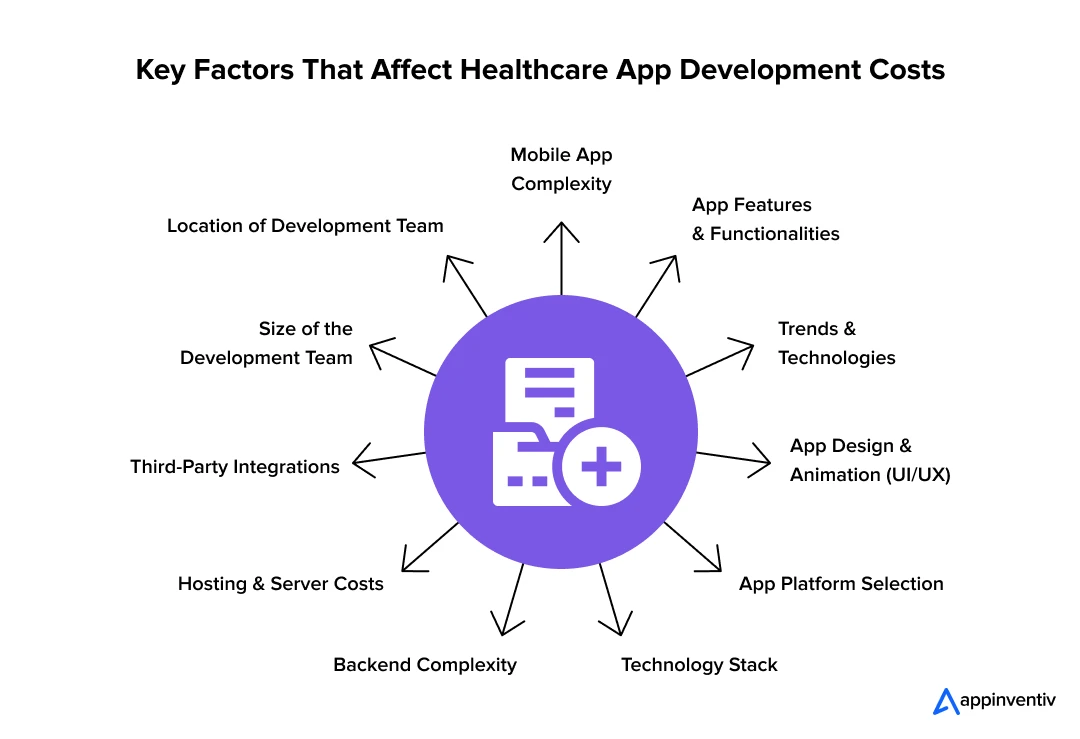
Mobile App Complexity
The complexity of your healthcare app directly impacts the development time and cost. For instance, a simple app with basic functionalities costs less compared to a complex app with advanced technologies like AI, real-time data tracking, or integration with electronic health records (EHR). In simple words, the more complex the feature set, the higher the development costs.
- Simple Apps include basic functionalities such as user profiles, appointment scheduling, or health reminders.
- Medium to Advanced Apps could include features such as telemedicine consultations, remote monitoring, or AI-driven health tracking.
- Enterprise-grade apps involve integrating multiple systems, such as EHRs, healthcare databases, and secure cloud services, for scalability and compliance.
Here’s a quick healthcare mobile app cost breakdown of how the complexity level can impact investments:
| App Complexity Level | Examples | Cost Estimate | Timeline |
|---|---|---|---|
| Simple |
| $40,000 – $100,000 | 3 – 6 months |
| Medium Complex |
| $100,000 – $200,000 | 6 – 9 months |
| Advanced |
| $200,000 – $300,000 | 9 – 12 months |
| Enterprise-Grade |
| $300,000 – $400,000+ | 12 – 18 months |
App Features and Functionalities
The range of features your app includes is one of the most vital factors that determine the overall healthcare application development cost. For instance, it can be cost-effective to implement basic features, like appointment booking and basic health tracking. However, adding advanced functionalities such as AI-driven analytics, video consultations, and blockchain-based payment systems increases the cost significantly.
Here’s a rough estimate of healthcare app development pricing based on the complexity:
| Feature Type | Description | Cost Estimate | Timeline |
|---|---|---|---|
| Basic Features |
| $10,000 – $20,000 | 3 – 6 weeks |
| Moderate Features |
| $20,000 – $30,000 | 6 – 10 weeks |
| Advanced Features |
| $30,000 – $50,000 | 10 – 16 weeks |
Trends & Technologies
The integration of the latest technologies like AI, IoT, Blockchain, AR/VR, and Cloud significantly impacts healthcare mobile app development costs. Even if these technologies help drive innovation and engagement, they also increase costs due to their complexity and resource requirements.
For example:
- IoT Integration in healthcare apps enables real-time monitoring of patient vitals using wearable devices. This adds both complexity and cost to the project.
Examples: Wearable health monitoring apps, fitness trackers, and remote patient monitoring apps. - The integration of Blockchain in healthcare apps offers enhanced security for sensitive health data. This is necessary for applications dealing with financial transactions or confidential health records.
Examples: Blockchain-powered healthcare data management apps, secure payment systems for health transactions. - AR/VR-driven healthcare apps enable immersive experiences such as virtual consultations, training simulations for medical professionals, and AR-guided surgeries. Adding these features significantly impacts healthcare application development cost and timeline
Examples: AR-based anatomy learning apps, VR-enabled surgical simulations, virtual patient consultations.
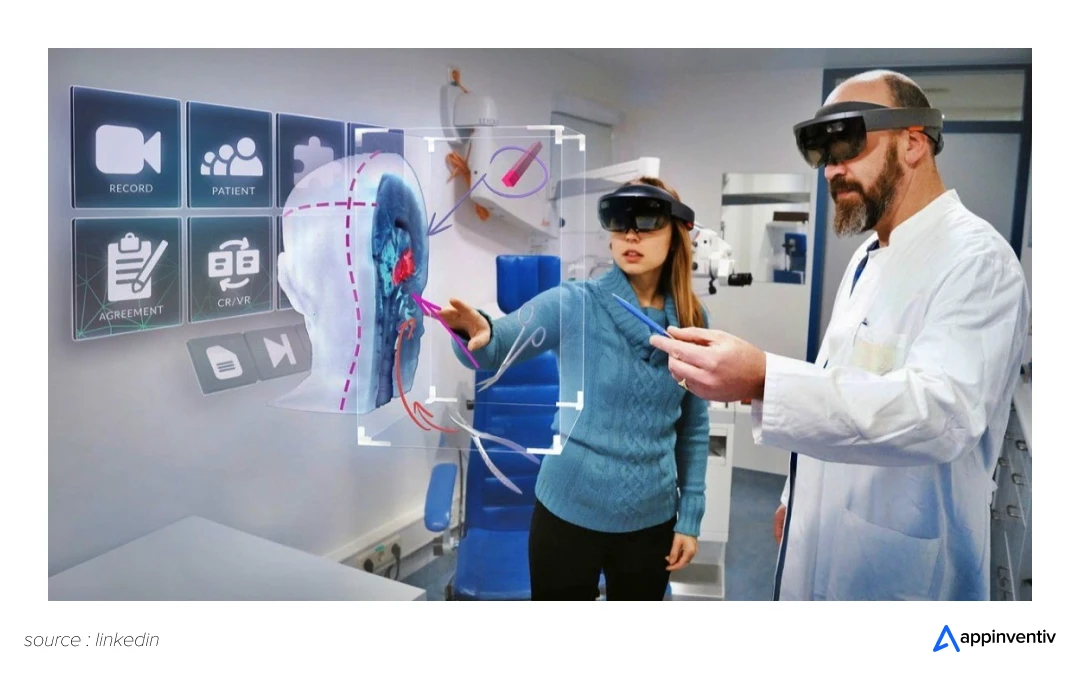
- Cloud computing in healthcare apps provides scalability, security, and storage. This allows large amounts of patient data to be securely stored and accessed from anywhere.
Examples: Cloud-based EHR management apps, patient data storage apps, and telemedicine apps with cloud integration. - AI and Machine Learning can power personalized health recommendations or predictive health analytics, which significantly increases the development cost.
Examples: AI-based health recommendation apps, predictive analytics apps for disease prevention.
| Technology | Use Cases | Cost Estimate | Timeline |
|---|---|---|---|
| AI & ML |
| $100,000 – $250,000 | 9 – 12 months |
| Cloud |
| $50,000 – $150,000 | 6 – 12 months |
| IoT Integration |
| $80,000 – $200,000 | 6 – 12 months |
| Blockchain |
| $120,000 – $250,000 | 12 – 18 months |
| AR/VR |
| $150,000 – $300,000 | 12 – 18 months |
App Design & Animation (UI/UX)
The UI/UX design is the heart and soul of your healthcare app that drives user engagement. A well-designed, intuitive UI/UX ensures that the app is easy to navigate, which allows users to include elderly patients with limited tech experience.
The design process includes wireframes, mockups, and high-fidelity prototypes. Custom design elements, such as animations or 3D visuals, add to the healthcare mobile app development cost but help provide a more immersive experience.
| Design Type | Description | Cost Estimate | Timeline |
|---|---|---|---|
| Standard Design | Basic templates, limited customization | $5,000 – $10,000 | 2 – 4 weeks |
| Custom UI/UX | Tailored, interactive design, unique branding | $10,000 – $30,000 | 4 – 8 weeks |
| Advanced Design | Animations, 3D elements, and advanced UI features | $30,000 – $50,000 | 8 – 12 weeks |
App Platform Selection
Choosing the right platform is crucial in determining both cost and user reach. Native apps are developed for specific platforms like iOS or Android, while cross-platform apps allow you to develop for both platforms at once. For healthcare apps, cross-platform development can be a more cost-effective choice, especially for businesses that want to reach a wider audience with limited resources.
Here are the most popular app development platform options you can choose from:
- Native App Platform (Android & iOS)
Native apps are built specifically for a particular platform, like iOS or Android. iOS app development is done using Swift or Objective-C, while Java and Kotlin are used for Android app development. Native apps offer high performance and seamless user experiences, but require separate development for each platform. This increases costs and development time.
- Web App Platform
Web apps, like Progressive Web Apps (PWAs), are more cost-efficient than native apps. These apps run in a web browser, allowing access from both desktop and mobile devices. However, web apps might lack some of the native functionalities, such as offline usage or advanced performance optimization. They are ideal for businesses looking to develop quickly with a budget-friendly approach.
- Cross-Platform
Cross-platform development allows you to build an app for both iOS and Android using a single codebase. This significantly reduces healthcare app development time and costs. Technologies like React Native and Flutter are commonly used for cross-platform development. While cross-platform apps may not offer the same level of performance as native apps, they strike a balance between functionality and cost-efficiency.
- Hybrid App Platform
Hybrid apps combine elements of both native and web apps. They are installed like a native app but run in a webview component, meaning the app uses web technologies like HTML5, CSS, and JavaScript. Hybrid apps can be a good choice for businesses looking for a blend of both worlds.
Also Read: Top 17 Healthcare Business Ideas for Startups – Appinventiv
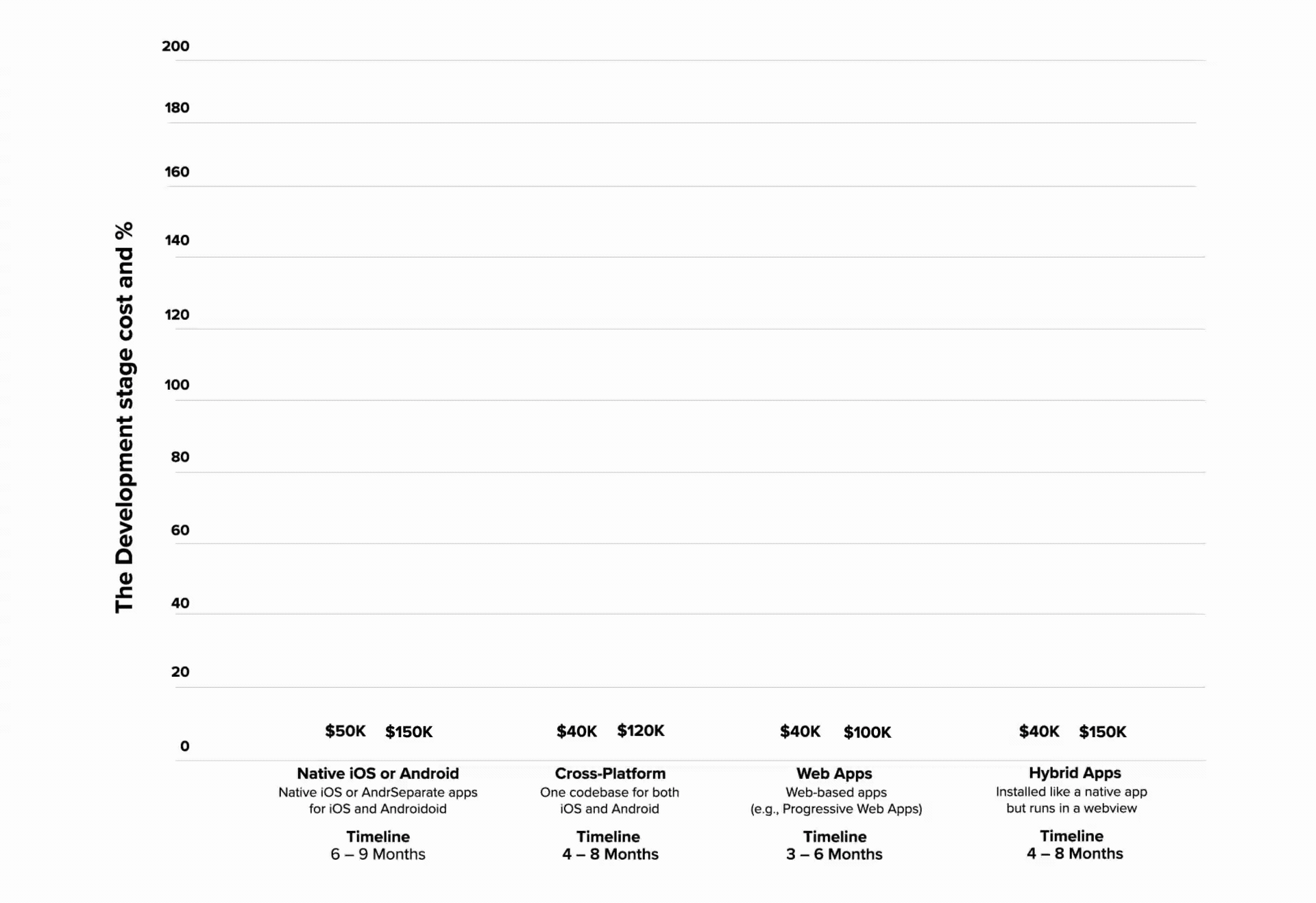
Technology Stack
The technology stack you choose will impact both the timeline and pricing for developing a healthcare app. The more specialized the technology, the higher the cost. Healthcare apps often require robust and secure technologies to ensure that sensitive patient data is handled properly.
| Technology Type | Description | Cost Estimate | Timeline |
|---|---|---|---|
| Basic Stack | Native iOS/Android, basic cloud storage | $40,000 – $70,000 | 3 – 6 months |
| Advanced Stack | AI, IoT, blockchain integration | $150,000 – $300,000 | 9 – 12 months |
Backend Complexity
The backend of the app manages databases, servers, and user data. The more complex the app’s backend, the higher the cost. For example, if your app needs to handle large amounts of patient data or requires real-time data updates, the complexity of the backend will increase significantly.
| Backend Type | Description | Cost Estimate | Timeline |
|---|---|---|---|
| Basic Backend | Simple database, user authentication | $5,000 – $15,000 | 2 – 4 weeks |
| Complex Backend | Real-time updates, advanced data analytics | $20,000 – $40,000 | 4 – 6 weeks |
Hosting & Server Costs
The hosting and server costs of your healthcare app will depend on how much data you need to store, the number of users, and the scalability requirements. If your app stores large amounts of patient data, you’ll need to ensure that the servers are secure and scalable. Since healthcare apps must comply with HIPAA and other data protection regulations, it is essential to partner with a reputable healthcare app development company that partners with a reliable hosting provider.
Cloud platforms such as Amazon Web Services (AWS), Google Cloud, or Microsoft Azure are popular choices for hosting healthcare apps. These platforms offer flexible pricing models based on usage and data volume.
| Hosting Type | Description | Cost Estimate | Timeline |
|---|---|---|---|
| Basic Hosting | Shared hosting, minimal data storage | $200 – $500 per month | Ongoing |
| Cloud Hosting | AWS, Google Cloud, or Azure for scalable storage and security | $500 – $2,000 per month | Ongoing |
| Enterprise Hosting | Dedicated servers, full compliance, and security | $2,000 – $5,000 per month | Ongoing |
Third-Party Integrations
Integrating third-party services into your healthcare app, such as payment gateways, messaging systems, or medical device integrations, can add additional costs. For example, integrating EHR/EMR systems in healthcare apps requires APIs and extensive testing to ensure seamless data exchange. Similarly, if you’re using third-party services like Twilio for SMS notifications or Stripe for payment processing, they will contribute to the development cost.
| Integration Type | Description | Cost Estimate | Timeline |
|---|---|---|---|
| Basic Integrations | Payment gateways, user authentication | $5,000 – $10,000 | 2 – 4 weeks |
| Advanced Integrations | EHR/EMR integration, real-time data sharing, and medical device sync | $10,000 – $30,000 | 6 – 10 weeks |
Size of the Development Team
The size of your development team can significantly impact the overall cost of app development for healthcare. A small team with a limited number of developers can take longer to develop the app. On the other hand, a larger team with specialists (backend, frontend, UI/UX, QA, etc.) can reduce the development time but increase the overall cost. A typical healthcare app development team may include:
- Project Manager
- Developers (iOS, Android, Backend)
- UI/UX Designers
- Quality Assurance Engineers
- Security Specialists
Here’s a rough estimate of the healthcare mobile app development costs associated with different team sizes:
| Team Size | Roles Involved | Cost Estimate | Timeline |
|---|---|---|---|
| Small Team | 2 – 4 developers, 1 designer, 1 project manager | $50,000 – $150,000 | 6 – 9 months |
| Medium Team | 5 – 7 developers, 1 project manager, 2 designers, 1 QA | $100,000 – $200,000 | 9 – 12 months |
| Large Team | 8+ developers, 2 project managers, 2 designers, 3 QA | $200,000 – $400,000 | 12 – 18 months |
Location of Development Team
The location of your development team can have a significant effect on both healthcare application development cost and timeline. For example, developers in the US or Western Europe often cost more than those in India or Eastern Europe.
Here’s an overview of the hourly rates and cost breakdowns based on the location of your healthcare app development company:
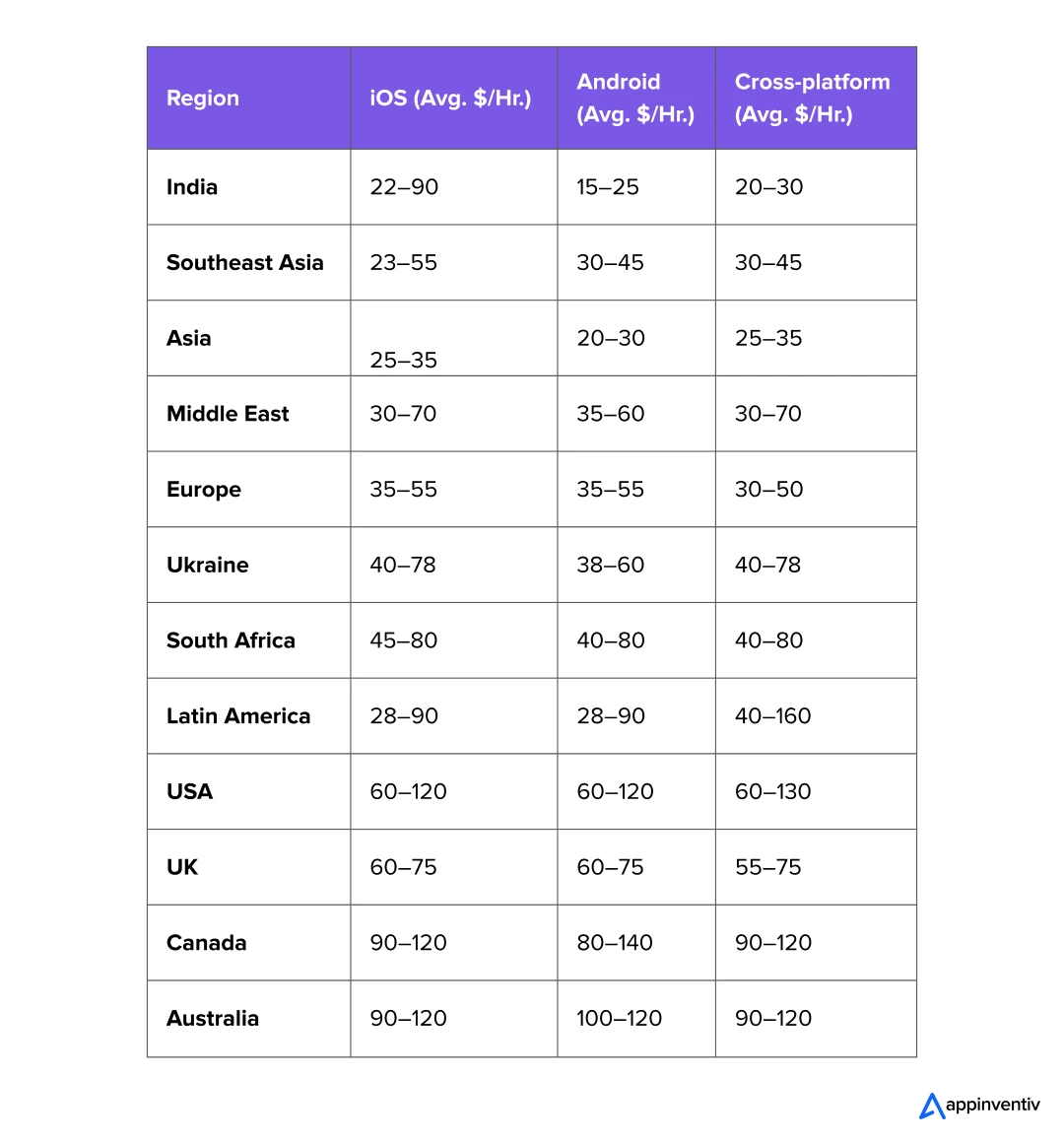
Hidden Factors Influencing Healthcare App Development Costs
While the upfront cost determining factors mentioned above are well-understood, there are several hidden costs that also add ot the overall cost of healthcare app development. These hidden costs can add up significantly, so it’s essential to plan for them in advance. Let’s dive into each of these hidden costs and why they are crucial to consider in your budgeting process.
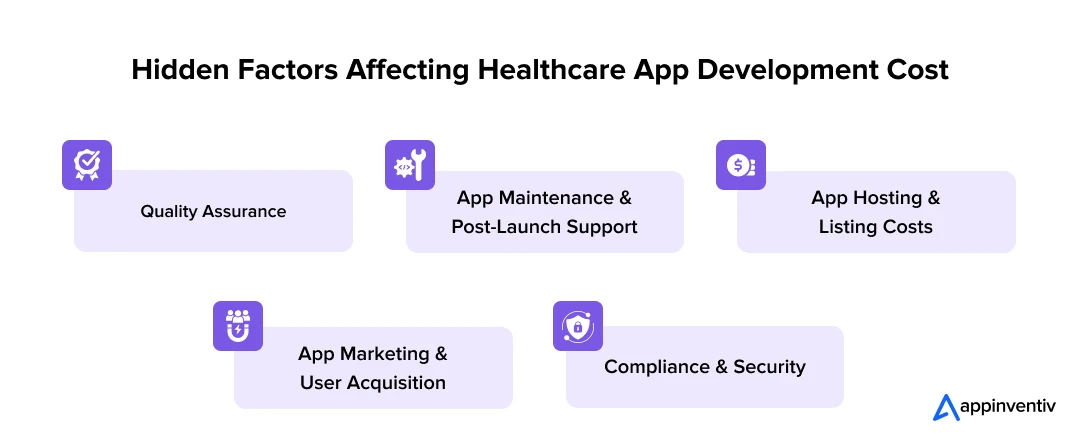
Quality Assurance
Quality assurance (QA) should not be an afterthought in app development. It must be an ongoing process that ensures your app performs seamlessly, provides a good user experience, and adheres to healthcare compliance. Thorough QA testing will catch bugs, glitches, and errors before they affect users or compromise the security of sensitive healthcare data.
Failing to incorporate proper QA throughout the development process can lead to costly post-launch fixes and poor user reviews. It can also tarnish the brand reputation.
| QA Task | Estimated Cost Range | Estimated Timeline |
|---|---|---|
| Functional and security testing | $5,000 – $15,000 | 4 – 6 weeks |
| Usability testing and bug fixes | $10,000 – $25,000 | 6 – 8 weeks |
| Ongoing QA post-launch | $5,000 – $10,000 per year | Ongoing |
App Maintenance & Post-Launch Support
The work is not over at the launch of your healthcare app. Ongoing app maintenance and post-launch support are essential for keeping the app functional, secure, scalable, and compliant.
Here are the typical post-launch expenses:
- Bug fixes and updates for new features.
- Security updates to protect against emerging threats.
- OS updates to ensure compatibility with the latest mobile versions.
- User feedback and feature improvements to enhance the user experience.
| App maintenance cost is estimated to be around 15% to 20% of the initial healthcare app development cost (annually). |
App Hosting & Listing Costs
Once your healthcare app is ready, you’ll need to host it on a secure server and list it on app stores like Google Play and Apple App Store. Hosting costs can vary depending on the traffic volume and the amount of data your app handles. Cloud services like AWS, Google Cloud, or Azure are common choices but come with their own pricing tiers. App stores also charge a fee for listing your app. The costs can vary based on the cloud service providers, store, and the pricing model you choose for your app.
| Task | Annual Cost |
|---|---|
| Cloud hosting (e.g., AWS, Google Cloud, Azure) | $12,000 – $120,000/year |
| App store listing (Google Play, Apple App Store) | $25 – $299/year per platform |
App Marketing & User Acquisition
Even the best healthcare apps can fail to reach their target audience if you don’t have a proper marketing plan in place. Without a solid marketing strategy, your app may go unnoticed. Healthcare apps often have specific target audiences, so user acquisition strategies such as targeted digital ads, influencer marketing, and content marketing are essential.
| Marketing Strategy | Estimated Cost Range | Estimated Timeline |
|---|---|---|
| Pre-launch campaigns (teaser, PR) | $5,000 – $20,000 | 1 – 3 months before launch |
| Paid user acquisition (digital ads, social media) | $10,000 – $50,000/month | Ongoing |
| Organic App Store Optimization (ASO) | $5,000 – $15,000 | 3 – 6 months |
Compliance and Security
Ensuring that your healthcare app complies with regulations such as HIPAA, GDPR, and other relevant data protection laws is non-negotiable. It’s not just about avoiding huge legal penalties; it’s about earning and keeping patient trust.
Building that trust means baking in strong security from day one. This adds to your initial and ongoing costs because you are investing in critical features like:
- Data encryption: Locking up sensitive information tightly.
- Secure storage: Keeping that data in protected digital vaults.
- Audit trails: Tracking every single action for accountability.
- Multi-factor authentication: Adding extra layers of security beyond just a password.
And it doesn’t stop there. Your app needs regular security audits to stay ahead of new threats and evolving rules.
| Compliance & Security Tasks | Estimated Cost Range | Estimated Timeline |
|---|---|---|
| Initial HIPAA/GDPR compliance | $15,000 – $40,000 | 4 – 6 weeks |
| Ongoing security audits | $5,000 – $20,000 | Annually |
| Data encryption and multi-factor authentication | $10,000 – $50,000 | 4 – 8 weeks |
Strategies for Cutting Down Healthcare App Development Cost
While developing a healthcare app involves numerous upfront and hidden costs, there are ways to optimize and save your budget. Here are some tried and tested strategies that can help you reduce healthcare app development costs:
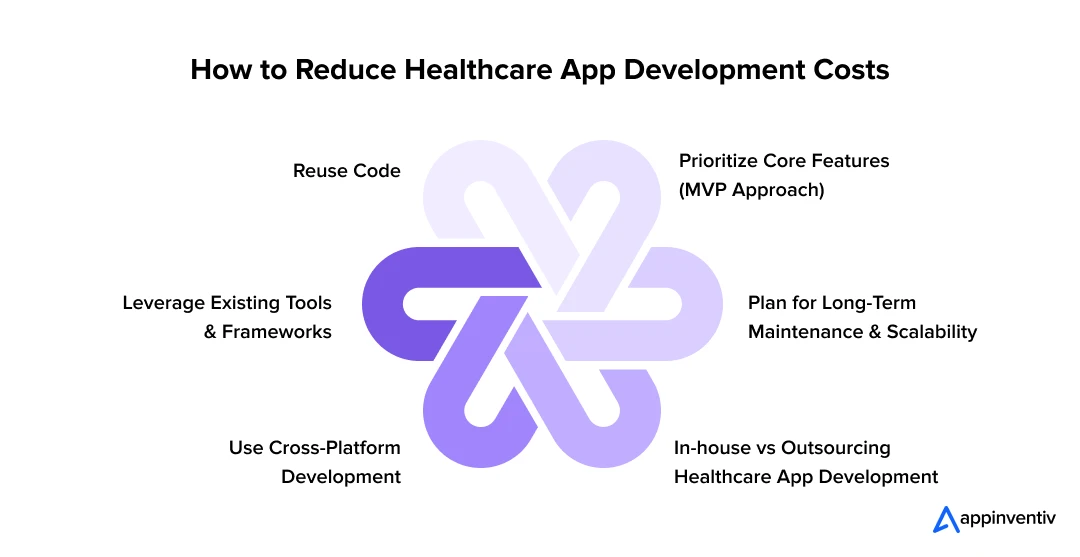
Prioritize Core Features (MVP Approach)
Instead of building a feature-rich app from the start, you should try building a Minimum Viable Product (MVP). An MVP includes only the essential features that provide real value to users, seek feedback, and secure funding. Once your users approve the MVP version and show engagement, you can gradually add advanced features based on user feedback.
MVP Strategy Benefits:
- Reduced initial development cost by 40-60%
- Faster time to market (3-6 months vs. 12-18 months)
- Real user feedback for feature prioritization
- Secure pre-seed funding
Plan for Long-Term Maintenance and Scalability
While it’s tempting to focus only on the initial launch, healthcare apps require ongoing maintenance and updates. By planning for scalability from the start, you can ensure the app will continue to perform well as your user base grows. This approach will help you avoid costly reworks or performance issues in the long run.
Key Maintenance Considerations
- Updating app features
- Fixing bugs
- Ensuring compatibility with new device OS versions
- Improving security features.
In-house vs Outsourcing Healthcare App Development
When it comes to healthcare app development, one of the key decisions is whether to build your app in-house or to outsource the development. Each approach has its pros and cons, but outsourcing is often a cost-effective choice. This can help you maintain high-quality development while reducing development costs.
When outsourcing a development team, look for developers with experience in healthcare app development and a thorough understanding of compliance regulations, such as HIPAA and GDPR. A skilled and experienced team can handle the complexity of healthcare apps while ensuring security and regulatory compliance.
Outsourcing Benefits:
- 30-40% cost savings compared to maintaining an in-house team
- Global pool of healthcare domain expertise
- Established outsourcing infrastructure
Use Cross-Platform Development
Don’t go for developing separate apps for iOS and Android. Using cross-platform development frameworks like Flutter or React Native can be a wise choice.
Cross-Platform Benefits:
- 30-40% cost reduction compared to separate native apps
- Shared codebase maintenance
- Consistent user experience across platforms
- Faster development cycles
Leverage Existing Tools and Frameworks
Building everything from scratch can be expensive and time-consuming. Therefore, consider utilizing existing frameworks, libraries, and open-source solutions for common app features such as authentication, notifications, and payment processing. This will save you time, reduce costs, and help you stay on budget.
For example:
- Use Firebase for authentication and notifications.
- Use Stripe for payment integration.
- Use Twilio for communication features like text messaging.
Code Reuse
Code reuse can be a great strategy to reduce app development costs. If your app shares features with existing apps or uses generic code modules, you can reuse certain parts of the codebase.
This approach is common in healthcare mobile app development and can save you approximately 20 to 30% on costs.
At Appinventiv, we recommend reusing only basic, commonly used components such as ‘Contact Us’ pages, login modules, or standard navigation patterns. Keep the core features of the app unique. This approach will make your app stand out in a competitive market.
How App Category Influences Healthcare Application Development Cost
When considering healthcare app development, one of the biggest questions is, “How much will it actually cost?” The honest answer? There’s no one-size-fits-all price tag. The cost hugely depends on what kind of healthcare app you are actually building. Each category comes with its own unique layers of complexity, specific features, and essential regulatory requirements to meet. All these factors directly influence the development cost, either pushing it up or bringing it down.
Telemedicine Apps
What they do: Telemedicine apps connect patients with doctors for virtual consultations, making healthcare more accessible. They are all about bridging the distance.
Why they cost: These apps need robust video and audio streaming, secure messaging, appointment booking systems, and often, payment processing. The more seamless, secure, and feature-rich the virtual visit, the more the telemedicine app development costs.
- Average Development Cost: $50,000 – $200,000+
- Key Features: Video consultations, appointment scheduling, patient profiles, payment integration, and secure messaging.
- Estimated Timeline: 6 – 12 months
Also Read: AI in Telemedicine: Use Cases, Challenges & Future Trends
EHR and EMR System Integration Apps
What they do: Electronic Health Records (EHR) and Electronic Medical Records (EMR) integrations are the backbone for seamless sharing of patient medical data. They ensure everyone on a patient’s care team has the right information at the right time.
Why they cost: Integrating with complex, sensitive medical record systems is a real challenge. It demands exceptionally strong security features, adherence to healthcare data privacy regulations, and compatibility with various hospital systems. These elements add to the healthcare app development cost.
- Average Development Cost: $100,000 – $300,000+
- Key Features: Secure patient data storage, multi-user access with roles, compliant data exchange, and robust security.
- Estimated Timeline: 12 – 18 months
Also Read: EMR Integration in Healthcare: Benefits, Features, & Costs
AI-Driven Healthcare Apps
What they do: AI-powered healthcare apps provide personalized insights and recommendations, from analyzing health data to suggesting lifestyle changes or potential diagnoses. They offer smarter, more proactive care.
Why they cost: Building an AI-driven app means developing or integrating complex algorithms, managing vast amounts of data for training the AI, and ensuring the AI’s recommendations are accurate and reliable in a clinical context. This often involves a skilled team of advanced data scientists and machine learning engineers, which impacts costs.
- Average Development Cost: $150,000 – $400,000+
- Key Features: AI-powered health recommendations, advanced data analysis, real-time monitoring, and integration with wearables.
- Estimated Timeline: 9 – 12 months
| Approximately 80% of professionals in the pharmaceutical and life sciences sectors utilize AI in drug discovery, with AI technology reducing the time required for drug discovery from 5-6 years to just 1 year. |
Chronic Disease Management Apps
What they do: These apps are designed to help patients and doctors monitor and manage long-term conditions like diabetes, heart disease, or asthma. They are about continuous support for ongoing health challenges.
Why they cost: They typically integrate with wearable devices for real-time data collection and facilitate direct communication between patients and their care providers. The need for precise data capture and actionable insights further complicates the situation and drives up the costs.
- Average Development Cost: $50,000 – $150,000
- Key Features: Health tracking, real-time data updates, personalized notifications, and secure doctor-patient communication.
- Estimated Timeline: 6 – 9 months
Fitness and Wellness Apps
What they do: These apps focus on general health improvement through tracking fitness activities, managing diet, and promoting overall well-being. They aim to empower users to take charge of their everyday health.
Why they cost: They need robust tracking capabilities, integration with popular fitness devices, and secure handling of user-generated health data. Features like personalized workout plans or community interaction can increase complexity and costs.
- Average Development Cost: $40,000 – $100,000
- Key Features: Fitness activity tracking, diet and meal planning, personalized activity recommendations, and integration with wearable devices.
- Estimated Timeline: 3 – 6 months
Also Read: How much does it cost to build a fitness app like Hevy?
Mental Health Apps
What they do: Mental health apps help users manage stress, anxiety, depression, and other mental health conditions, often through guided exercises, journaling, or virtual therapy. They provide accessible support for mental well-being.
Why they cost: These apps need to be highly secure and private due to the sensitive nature of mental health data. Features like guided meditations, AI chatbots for emotional support, or secure video conferencing for therapy sessions all add to the mental health app development complexity and cost.
- Average Development Cost: $50,000 – $150,000
- Key Features: Guided meditation, mental health chatbots, therapy session scheduling, mood tracking, and secure journaling.
- Estimated Timeline: 6 – 9 months
Remote Patient Monitoring (RPM) Apps
What they do: IoT-driven RPM apps enable continuous monitoring of a patient’s health from a distance by integrating with various medical devices. They focus on proactive health management and early detection of issues.
Why they cost: This category often involves complex integrations with a range of medical devices, real-time data processing, and secure dashboards for both patients and healthcare providers. The need for high accuracy and instant alerts drives up the cost to develop a remote patient monitoring app.
- Average Development Cost: $100,000 – $250,000+
- Key Features: Integration with medical wearables, real-time health data tracking, automated alerts for abnormal readings, and data sharing with healthcare providers.
- Estimated Timeline: 9 – 12 months
Real-World Examples of Healthcare Apps Based on Different Categories
The healthcare industry has a variety of apps tailored to different needs—whether it’s managing chronic conditions, providing telehealth services, or improving fitness. Below are real-world examples of healthcare apps across various categories. They showcase the diversity and potential of mobile applications in healthcare.
| App | Description | Category | Estimated Cost to Build a Similar App |
|---|---|---|---|
| Apple Health | Collects health data from iPhones, Apple Watches, sets medication reminders, and organizes health records. | Health Tracking | $80,000 – $150,000 |
| MyFitnessPal | Contains a database of food items with nutritional values and a fitness tracker segment. | Fitness & Nutrition | $90,000 – $100,000 |
| Fitbit | A fitness tracker that monitors heart rate, Electrodermal Activity, temperature, sleep, and menstrual cycles. | Fitness Tracking | $60,000 – $200,000 |
| Teladoc Health | Provides remote consultations through video calls, helping users access healthcare professionals remotely. | Telemedicine | $60,000 – $250,000+ |
| Headspace | Offers guided meditation and mindfulness tools to manage stress, anxiety, and mental wellness. | Mental Health | $50,000 – $150,000 |
| DiabeticU | Uses AI-powered tools for personalized diabetes management, tracking blood glucose levels, and medication. | Chronic Disease Management | $100,000 – $300,000+ |
| Epic Systems | A comprehensive EHR system for managing patient records and facilitating communication among healthcare providers. | EHR/EMR Systems | $150,000 – $500,000+ |
| Medisafe | A medication management app that sends reminders for taking prescribed drugs and tracks medication adherence. | Medication Management | $50,000 – $150,000 |
| CureMetrix | Uses AI to improve mammography readings and help healthcare providers better detect breast cancer. | AI in Healthcare | $150,000 – $400,000+ |
| Calm | Provides sleep stories, meditation, and relaxation techniques to reduce stress and promote better sleep. | Mental Health & Wellness | $40,000 – $100,000 |
Tap into this thriving market with a tech-advanced mobile app now.
How to Build a Healthcare Mobile App & Cost Breakdown Based on Involved Stages
Building a mobile healthcare app is a meticulous journey that involves various phases, each contributing to the overall cost and timeline. By understanding each step, you can better plan your budget and ensure that the app delivers maximum value without overspending. Here’s a breakdown of the mobile app development process and its associated costs for healthcare app development in 2025.
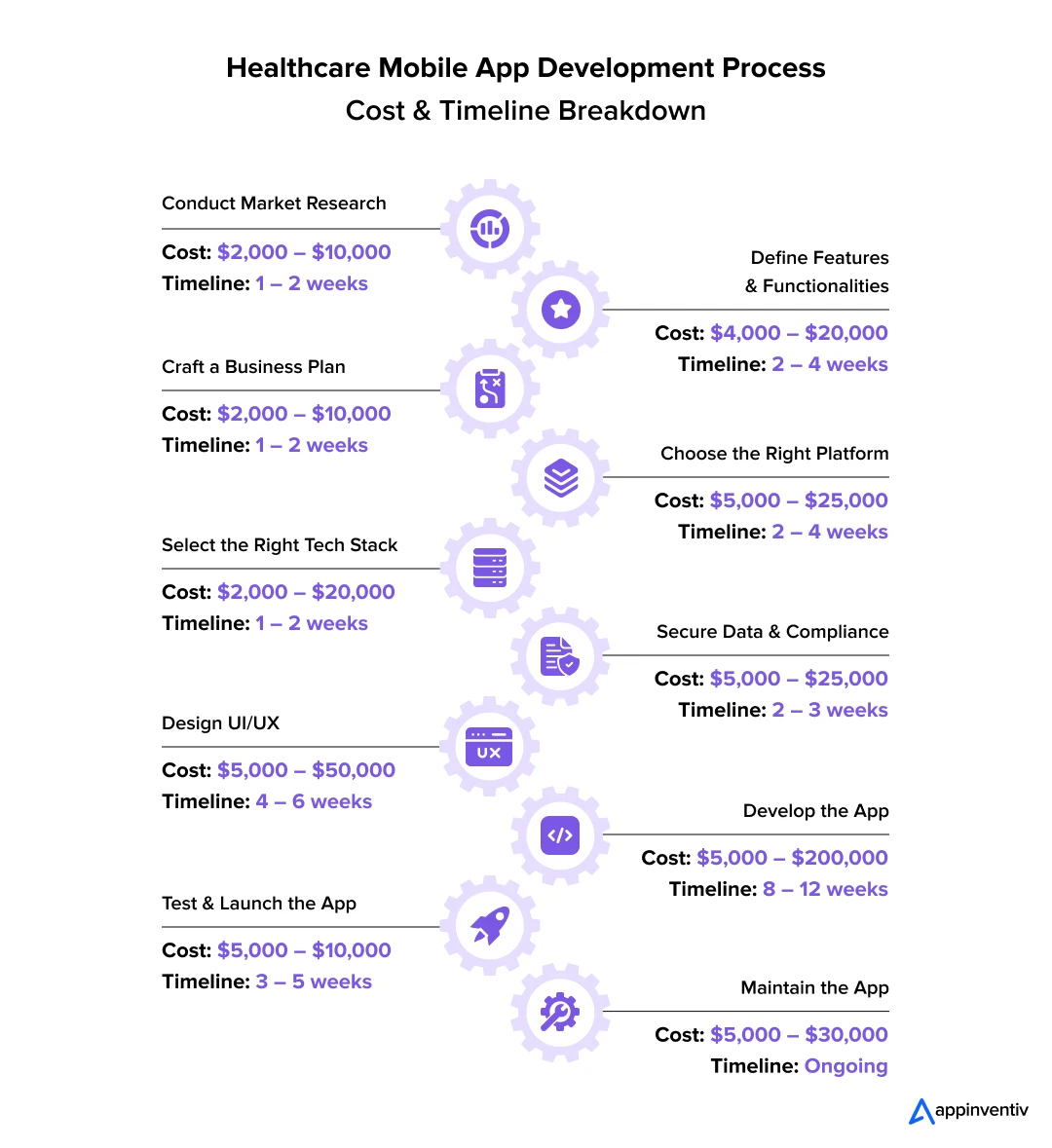
1. Conduct Market Research
Cost Estimate: $2,000 – $10,000
Timeline: 1 – 2 weeks
Before you start coding, it’s crucial to understand the market you’re entering. This phase involves researching your target audience, competitors, and trends in healthcare apps. The insights gathered during this phase help shape the app’s design and functionality, ensuring it meets users’ needs.
- Action: Analyze competitor apps, understand user needs, identify market gaps, and examine emerging trends in healthcare technology.
- Outcome: A deep understanding of your target audience, a clear roadmap for your app’s functionality, and a solid foundation for the app’s success.
2. Define Features and Functionalities
Cost Estimate: $4,000 – $20,000
Timeline: 2 – 4 weeks
Now that you have the research, it’s time to define the core features that will make your app stand out. Focusing on an MVP (Minimum Viable Product) will allow you to launch faster and at a lower cost. Once the MVP is live, you can continue to add more features based on user feedback.
- Action: Prioritize core features that solve user problems, plan for scalability, and map out future features.
- Outcome: A focused set of features that deliver value to users while maintaining a controlled budget.
3. Craft a Business Plan
Cost Estimate: $2,000 – $10,000
Timeline: 1 – 2 weeks
A business plan is essential for any app, especially in healthcare. This document will define the app’s revenue model, marketing strategy, and growth projections. It will also help decide whether to monetize through in-app purchases, ads, or subscriptions.
- Action: Set clear goals for app success, choose a revenue model, and create financial projections to understand profitability.
- Outcome: A strategic plan to guide the app’s growth and profitability.
4. Choose the Right Platform
Cost Estimate: $5,000 – $25,000
Timeline: 2 – 4 weeks
The platform you choose for your app will play a critical role in the app’s performance, cost, and timeline. Native apps for iOS or Android are typically more expensive to develop, while cross-platform development solutions like Flutter or React Native offer a more cost-effective approach, allowing you to target both platforms simultaneously.
- Action: Decide whether to build for iOS, Android, or use a cross-platform framework, depending on your budget and target audience.
- Outcome: A well-chosen platform that balances cost and performance.
5. Select the Right Tech Stack
Cost Estimate: $2,000 – $20,000
Timeline: 1 – 2 weeks
The tech stack is a crucial aspect of app development, as it determines how robust and scalable your app will be. Choosing the right programming languages, frameworks, and database technologies ensures the app’s performance, scalability, and future-proofing.
- Action: Select the right programming languages, frameworks, and backend technologies that support the app’s needs (e.g., Swift for iOS, Kotlin for Android, Node.js for backend).
- Outcome: A technically sound app architecture that supports long-term growth.
6. Secure Data and Compliance
Cost Estimate: $5,000 – $25,000
Timeline: 2 – 3 weeks
Healthcare apps must comply with GDPR and HIPAA regulations, which govern how personal data is collected, stored, and shared. Compliance adds complexity to the development process, but is crucial for user trust and legal protection.
- Action: Implement security measures like encryption, two-factor authentication, and regular compliance checks.
- Outcome: A secure and legally compliant app that protects user data.
7. Design UI/UX
Cost Estimate: $5,000 – $50,000
Timeline: 4 – 6 weeks
A seamless user interface (UI) and experience (UX) are crucial for user engagement and retention. The design process involves wireframing, prototyping, and building a visual experience that users can easily navigate while using the app.
- Action: Collaborate with designers to create wireframes, prototypes, and a user-friendly UI.
- Outcome: A visually engaging and intuitive app design that maximizes user satisfaction.
8. Develop the App
Cost Estimate: $5,000 – $200,000
Timeline: 8 – 12 weeks
The development phase is where the app comes to life. Depending on the app’s complexity, you’ll need both front-end and back-end development, as well as third-party integrations (e.g., payment gateways, healthcare APIs).
- Action: Code the app’s front-end and back-end, ensuring compatibility across platforms and devices.
- Outcome: A fully functional app that matches your initial vision.
9. Test and Launch the App
Cost Estimate: $5,000 – $10,000
Timeline: 3 – 5 weeks
Testing is essential to ensure the app works flawlessly before launch. During this phase, unit tests, integration tests, and user acceptance testing (UAT) will be conducted to iron out bugs and issues. Once testing is complete, the app can be submitted to app stores for approval and launched.
- Action: Conduct rigorous testing across multiple devices and platforms to ensure everything works smoothly.
- Outcome: A polished, bug-free app ready for users.
10. Maintain the App
Cost Estimate: $5,000 – $30,000 annually
Timeline: Ongoing
Post-launch, ongoing maintenance is required to keep the app updated, fix bugs, and introduce new features. Regular updates ensure the app stays functional and competitive.
- Action: Plan for regular updates, bug fixes, and feature enhancements based on user feedback.
- Outcome: An app that evolves with user needs and operating system updates.
Mobile App Development Cost Breakdown by Stages
Here’s a quick overview of the total cost and timeline for building a healthcare app:
| Step | Estimated Cost | Development Timeline |
|---|---|---|
| 1. Conduct Market Research | $2,000 – $10,00 | 1–2 weeks |
| 2. Define Mobile App Features and Functionalities | $4,000 – $20,000 | 2–4 weeks |
| 3. Craft a Business Plan | $2,000 – $10,000 | 1–2 weeks |
| 4. Choose the Right Platform | $5,000 – $25,000 | 2–4 weeks |
| 5. Choose the Right Tech Stack | $2,000 – $20,000 | 1–2 weeks |
| 6. Secure Data and Compliance | $5,000 – $25,000 | 2–3 weeks |
| 7. Design UI/UX | $5,000 – $50,000 | 4–6 weeks |
| 8. Develop the App | $5,000 – $200,000 | 8–12 weeks |
| 9. Test and Launch the App | $5,000 – $10,000 | 3–5 weeks |
| 10. Maintain the App (Annually) | $5,000 – $30,000 per year | Ongoing (Annual Updates) |
| Total | $40,000 – $400,000 | 18–34 weeks (initial) |
Our skilled team of over 1,600 tech experts is ready to develop a secure, scalable, and HIPAA-compliant healthcare app tailored to your unique business needs.
How Appinventiv Built Successful Healthcare Apps
At Appinventiv, we have developed numerous healthcare applications that demonstrate the real-world impact of well-designed healthcare technology. Our experience spans various healthcare domains, from telemedicine platforms to chronic disease management solutions.
DiabeticU
DiabeticU, a HealthTech startup, aimed to fill the gap in diabetes management tools, which were often generic and impersonal. Patients with Type 2 diabetes struggled to get personalized, real-time guidance to help manage their condition effectively.
The Solution: Appinventiv developed an AI and NLP-powered platform for DiabeticU, featuring a smart chatbot that delivers personalized health advice. The platform tracks key health metrics such as blood glucose levels, medication, and activity, providing actionable insights tailored to each user.
The Impact:
- Launched a first-of-its-kind AI-driven HealthTech app for diabetes management.
- Empowered patients with a 24/7 digital companion for real-time health monitoring and support.
Estimated Development Cost (for a similar app): The cost to develop an app like DiabeticU typically ranges from $100,000 to $ 300,000 or more.
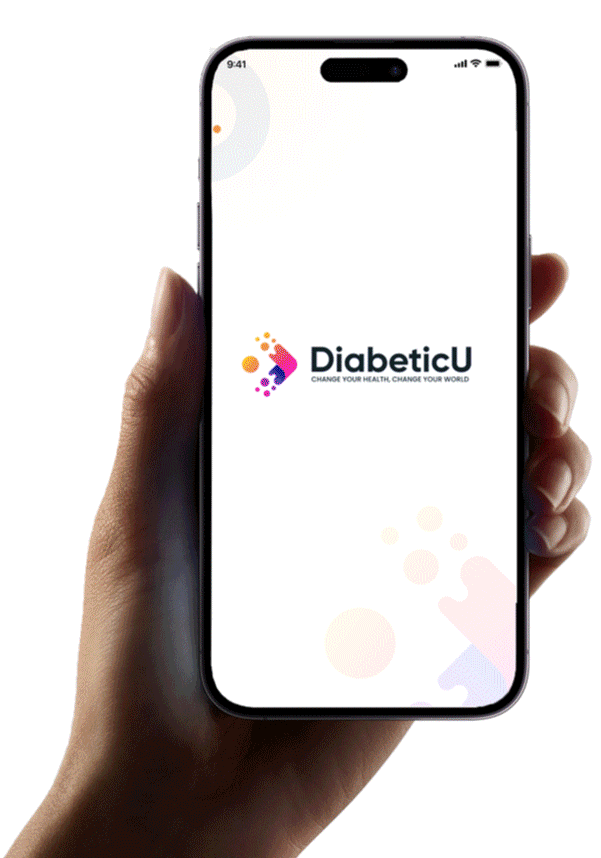
Health-e-People
Health-e-People faced the challenge of unifying fragmented health data from over 200 devices and apps into a cohesive platform. Their goal was to enable users to monitor their health in real-time, connect with caregivers, and contribute to ongoing medical research.
The Solution: Appinventiv developed the Health-e-People app, a comprehensive health assessment platform that integrates data from various sources, providing predictive and prescriptive analytics. The platform facilitates seamless connections between users, caregivers, and researchers, delivering personalized insights.
The Impact:
- The platform was praised for its user-friendly design and ability to deliver actionable health insights.
- Contributed to medical research by sharing anonymized health data, aiding the advancement of healthcare knowledge.
Estimated Development Cost (for a similar app): The cost to build an app similar to Health-e-People falls between $150,000 and $ 350,000 or more.
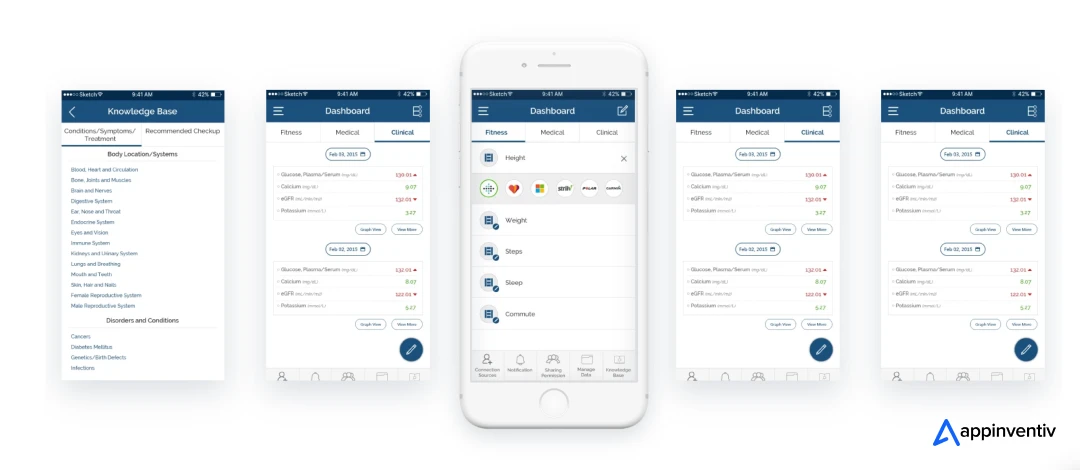
Soniphi
Soniphi collaborated with Appinventiv to revolutionize personal wellness by using voice analysis to assess an individual’s vitality. The challenge was to accurately capture human voice data while minimizing background noise, ensuring precise and actionable health insights.
The Solution: Appinventiv developed a bioacoustic technology platform that analyzes 94% of vocal information to provide users with a comprehensive well-being analysis report. This system offers personalized health insights based on voice patterns.
The Impact:
- Introduced an innovative method for health evaluation through voice analysis.
- Developed a platform capable of handling large-scale data processing efficiently.
Estimated Development Cost (for a similar app): The cost to build an app like Soniphi ranges between $200,000 and $ 400,000 or more.
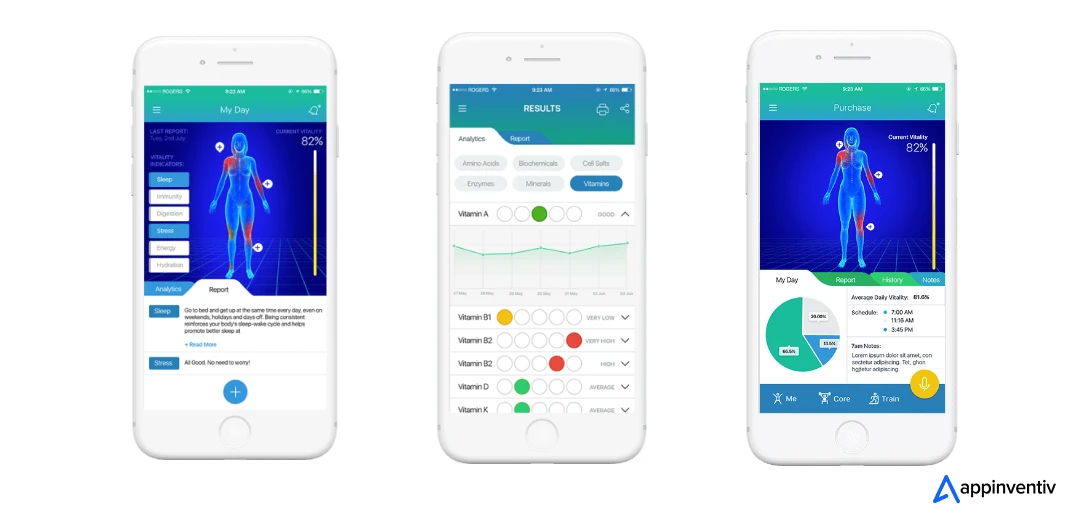
YouCOMM
YouCOMM partnered with Appinventiv to improve patient-provider communication by replacing traditional call bell systems. They wanted to enhance response times and create a more inclusive experience, especially for patients with mobility or communication challenges.
The Solution: Appinventiv developed an intuitive platform that enables patients to directly communicate with healthcare providers, request assistance, and access services. The solution integrates seamlessly into the hospital environment, streamlining communication.
The Impact:
- Deployed across 5+ hospital chains in the U.S., transforming patient-caregiver interaction.
- Resulted in a 60% improvement in nurses’ real-time response times.
Estimated Development Cost (for a similar app): The average cost of developing a healthcare app similar to YouCOMM is typically between $140,000 and $250,000 or more.
Key Success Factors
Our healthcare app development success stems from several key factors:
- Domain Expertise: Our team includes healthcare professionals, regulatory experts, and experienced developers who understand both technology and healthcare requirements.
- Compliance-First Approach: We build HIPAA compliance into every aspect of development, not as an afterthought but as a fundamental requirement.
- User-Centric Design: Every app we engineer undergoes extensive user testing with real healthcare providers and patients to ensure usability and effectiveness.
- Scalable Architecture: Our apps are designed to accommodate growing user bases and evolving healthcare requirements without requiring major redevelopment.
- Continuous Support: We provide post-launch support that encompasses regular updates, security patches, and feature enhancements.
Healthcare App Monetization Strategies: How Do Apps Make Money?
Once your healthcare app is live, the next step is to figure out how it will generate revenue. There are various monetization strategies for mobile apps. Choosing the right revenue models depends on your app’s purpose, target audience, and business type. Here are some common ways healthcare apps make money:
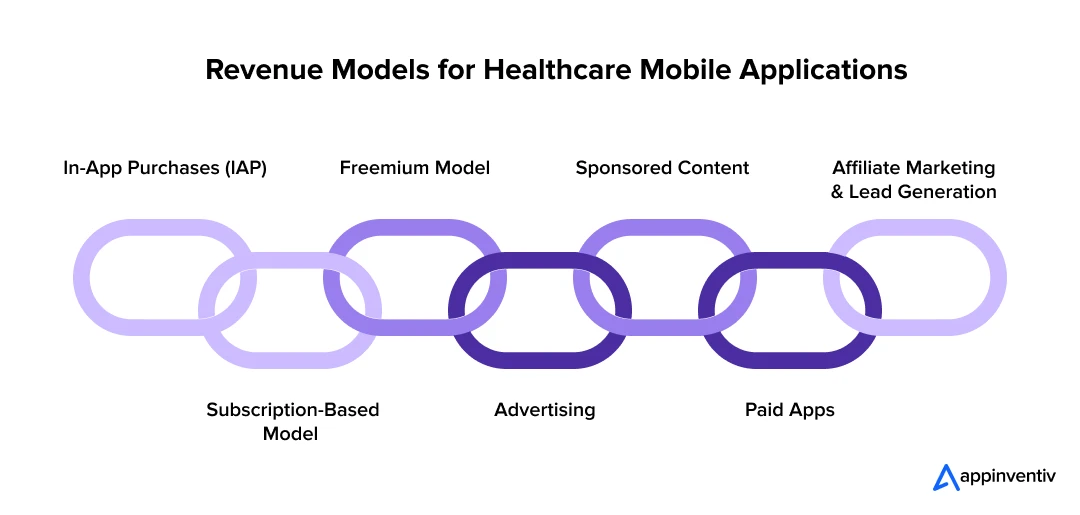
1. In-App Purchases (IAP)
In-app purchases are a popular way to generate revenue, especially for apps offering premium content, features, or services. For healthcare apps, this could involve offering advanced features such as personalized health reports, extra storage, or access to premium content like fitness programs or meal plans.
- Examples: Unlocking advanced health analytics, accessing more extensive medical content, or purchasing additional consultation hours with doctors.
2. Subscription-Based Model
Subscription-based models are ideal for healthcare apps that provide ongoing services, such as telemedicine, wellness tracking, or personalized health insights. Users pay a recurring fee (monthly, quarterly, or yearly) to access premium content or features.
- Examples: Subscription to personalized diet and workout plans, continuous remote monitoring, or premium mental health content.
3. Freemium Model
The freemium model allows users to access a basic version of the app for free while offering advanced features or services for a fee. This approach attracts a large user base quickly, and you can convert free users to paying customers over time.
- Examples: Basic health tracking for free, with premium features like detailed reports or virtual consultations available for a fee.
4. Advertising
If your healthcare app has a large user base, you can earn revenue by displaying ads within the app. Healthcare-related advertisements, such as products, services, or health insurance plans, are relevant to users and can provide valuable monetization opportunities.
- Examples: Displaying ads for health-related products like fitness trackers, nutritional supplements, or insurance plans.
5. Sponsored Content
Sponsored content involves partnering with other companies or healthcare providers to promote their products or services within the app. This could include sponsored blog posts, articles, or product promotions.
- Examples: Sponsorships from pharmaceutical companies or health-related brands offering exclusive discounts or offers.
6. Paid Apps
Charging a one-time download fee for your app is another revenue option, though it’s less common in the mobile app industry. This model works best if your app offers a unique, high-value service that users are willing to pay for upfront.
- Examples: A premium healthcare app offering access to a database of expert advice or specialized medical tools.
7. Affiliate Marketing & Lead Generation
Apps can also generate revenue by promoting third-party services or products and earning a commission on any resulting sales or leads. This is particularly effective for apps focused on healthcare products, wellness tools, or medical services.
- Examples: Referring users to a pharmacy or wellness product company and earning a commission for each purchase made through the app.
How to Calculate ROI for Healthcare App Development
Calculating the ROI is essential for effective budget planning. Here’s a simple formula to calculate ROI for healthcare app development:
| ROI (%) = [(Total Revenue or Cost Savings – Total Investment) / Total Investment] × 100 |
Example:
If your app costs $150,000 to develop and generates $250,000 in new revenue or operational savings in the first year, the calculation would be:
| ROI = [($250,000 – $150,000) / $150,000] × 100 = 66.7% |
Key ROI Drivers:
- Increased patient engagement and retention
- Reduced administrative overhead
- New revenue streams (subscriptions, telemedicine, partnerships)
- Improved care outcomes, leading to lower readmission rates.
How Appinventiv Helps You Build Healthcare Apps That Deliver Value
At Appinventiv, we know that building a healthcare app is more than just a technical project. It is about creating solutions that drive real value for patients, providers, and healthcare systems. The process can be challenging, especially when you are navigating complex features and strict compliance requirements. That’s where we come in.
We have spent over a decade crafting next-gen products that not only meet the needs of medical organizations but also elevate their digital transformation journey in healthcare. From simple health-tracking apps to advanced AI-driven telemedicine solutions, we understand how to strike a balance between cost, efficiency, and innovation.
Here’s how we make it happen:
- Realistic, Transparent Cost Planning: Healthcare app development is an investment, but knowing how to plan that investment is key. We provide healthcare app development cost estimates tailored to your unique needs that align with your goals, ensuring that every dollar spent drives real value for your vision for the app.
- Tech Expertise, Tailored to Your Needs: Whether you’re integrating wearables, leveraging AI/ML, or building a HIPAA-compliant telemedicine platform, we guide you through the right choices to ensure your app scales smoothly and delivers innovative features that your users will love.
- End-to-End Support: From market research to launch and ongoing maintenance, we are with you every step of the way. You’ll never have to worry about compliance, security, or performance. We take care of it all so you can focus on making a difference in healthcare.
- A Proven Track Record: We have helped global healthcare brands deliver impactful, secure, and user-friendly apps that drive engagement and improve patient outcomes. Our 1600+ strong team brings not just technical expertise, but also deep industry knowledge to each project.
Ready to get started? Get in touch with our team today and let’s build something that will shape the future of healthcare.
FAQs
Q. How to choose an app development company for a healthcare app?
A. Choosing the right development partner is a vital decision. You should look for a company with a proven track record in healthcare app development, demonstrated expertise in compliance (HIPAA, GDPR, etc.), a strong portfolio of relevant projects, and a clear understanding of advanced technologies like AI/ML and IoT.
Prioritize companies that emphasize data security, offer comprehensive services from ideation to post-launch support, and are experienced in the specific type of healthcare app you envision.
Q. How to keep app development costs within budget?
A. To manage healthcare app development cost effectively, you should opt for the following practices:
- Start with an MVP: Focus on core features for the initial launch.
- Prioritize ruthlessly: Differentiate between “must-have” and “nice-to-have” features.
- Opt for Cross-Platform: Consider frameworks like React Native or Flutter if native performance isn’t critically essential, potentially saving up to 40% on development.
- Thorough Planning: Invest in a detailed discovery phase to avoid costly reworks later.
- Continuous Monitoring: Regularly review expenses and project scope to ensure accuracy and alignment.
Q. How much does it cost to develop a healthcare app?
A. The cost to build a healthcare app varies significantly based on the factors listed above in the blog. Here is a rough estimate of healthcare application development costs based on project complexity.
- Simple Apps – $40,000-$100,000
- Medium Complex Apps – $100,000-$200,000
- Advanced Apps – $200,000-$400,000
- Enterprise Grade Apps – $400,000+
Q. How much does it cost to implement AI into healthcare?
A. Implementing AI features into a healthcare app can significantly increase costs due to the complexity of data processing, model training, and specialized expertise required.
- Basic AI (e.g., chatbots, simple predictive analytics): $100,000 – $200,000
- Advanced AI (e.g., image diagnostics, complex predictive models, Generative AI): $250,000 – $500,000+
- Enterprise-grade AI: Highly sophisticated AI apps, such as those involving deep learning for real-time surgical guidance, can exceed $1 million.
Q. How does the Vision-to-Traction System affect health app development costs?
A. A “Vision-to-Traction” system, as practiced by Appinventiv, is a structured approach that impacts costs positively by ensuring focus and efficiency. It begins with clearly defining the app’s vision and target users (Discovery Phase), then building an MVP to gain early traction.
This approach minimizes wasted resources on unproven features and allows for iterative development based on real market feedback. By validating assumptions early and prioritizing features that deliver measurable value it helps avoid costly scope creep and reworks. This ultimately leads to a more cost-effective development process and a higher ROI.
Q. What are the advantages of healthcare app development?
A. Healthcare app development offers numerous benefits:
- Improved Patient Engagement: Empowering patients with self-management tools and information.
- Enhanced Accessibility: Providing virtual care and breaking down geographical barriers.
- Increased Efficiency: Streamlining administrative tasks, appointments, and data management for providers.
- Better Health Outcomes: Enabling remote monitoring, timely interventions, and personalized care.
- Cost Reduction: Decreasing hospital readmissions, no-shows, and operational overhead.
- New Revenue Streams: Creating opportunities for monetization through subscriptions, paid services, or partnerships.
Q. How much does HIPAA compliance add to development costs?
A. HIPAA compliance is non-negotiable for apps handling Protected Health Information (PHI) in the US. This adds a significant layer of cost.
- Initial setup for HIPAA compliance (technical safeguards, administrative policies, physical safeguards) can add $5,000 to $25,000 for basic apps.
- For moderately to highly complex applications, implementing robust security measures, conducting thorough risk analyses, regular security audits, and ensuring compliance with evolving regulations can add 20-50% to the base development cost.
Ongoing compliance and legal fees are also recurring expenses.
Q. Should I build native or cross-platform healthcare apps?
A. The choice depends on your unique business needs and budget:
- Native Apps: Offer superior performance, better user experience, and full access to device features. This is ideal for complex apps requiring high performance (e.g., real-time monitoring with wearables) or rich animations.
- Cross-Platform Apps (React Native, Flutter): Allow a single codebase for both iOS and Android, significantly reducing development time and saving up to 40% on costs. This is suitable for MVPs, apps with standard UI, and those that do not require deep hardware integration.
For healthcare, where speed to market and budget are crucial considerations, cross-platform can be a strong starting point.
Q. How can I estimate ROI for my healthcare app investment?
A. Estimating ROI involves quantifying both costs and benefits.
- Total Costs: Include development, design, compliance, operations, marketing, and maintenance.
- Total Benefits: Quantify direct revenue (subscriptions, fees), indirect savings (reduced administrative burden, lower readmissions, improved patient retention), and improved health outcomes.
- Formula: ROI (%) = ((Total Benefits – Total Costs) ÷ Total Costs) × 100.


- In just 2 mins you will get a response
- Your idea is 100% protected by our Non Disclosure Agreement.

In today’s digital age, having a strong online presence is the key to unlocking the door of business transformation and reaching the target audience. One of the most efficient ways to achieve this is through web app development. Web applications have grown at an unprecedented pace in the past decade, revolutionizing operations across various industries.…

The well-intentioned shift to the decentralized universe, also known as Web 3.0, has radically increased the demand for blockchain technology. The latter can revolutionize businesses and transactions, allowing business owners to create a robust, well-designed, and transparent distributed system capable of ensuring maximum ROI. Enterprises are swiftly integrating blockchain technology into their operations to revolutionize…
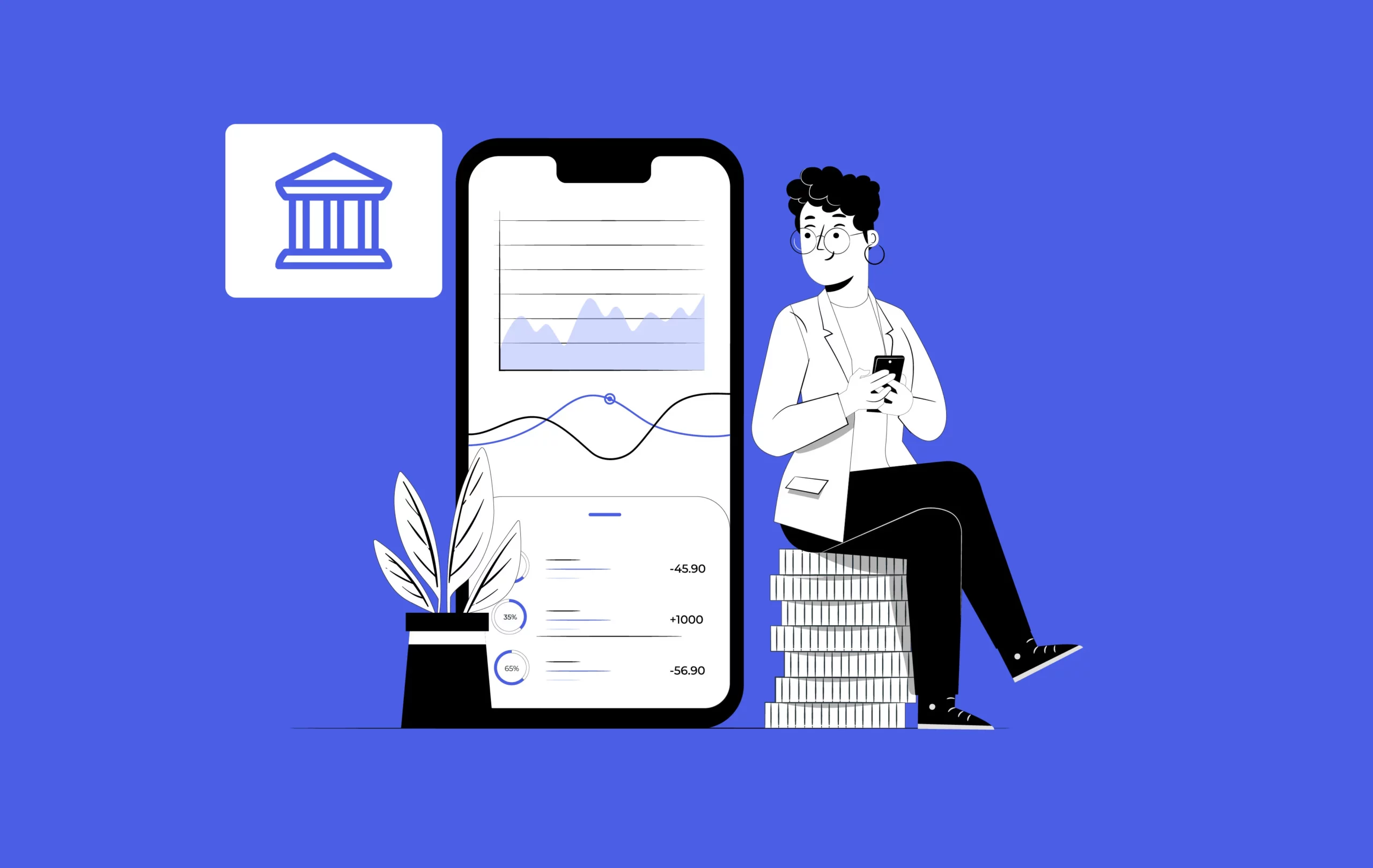
Remember when you first started your FinTech company? You probably had this vision of revolutionizing how people handle money. Fast forward to today, and you might be dealing with software that crashes during peak hours, customers complaining about slow transfers, and security vulnerabilities that keep you awake at night. The truth is, this is where…







